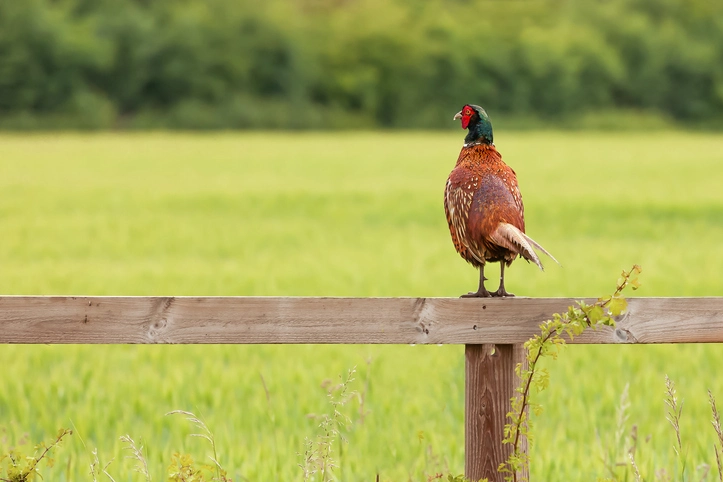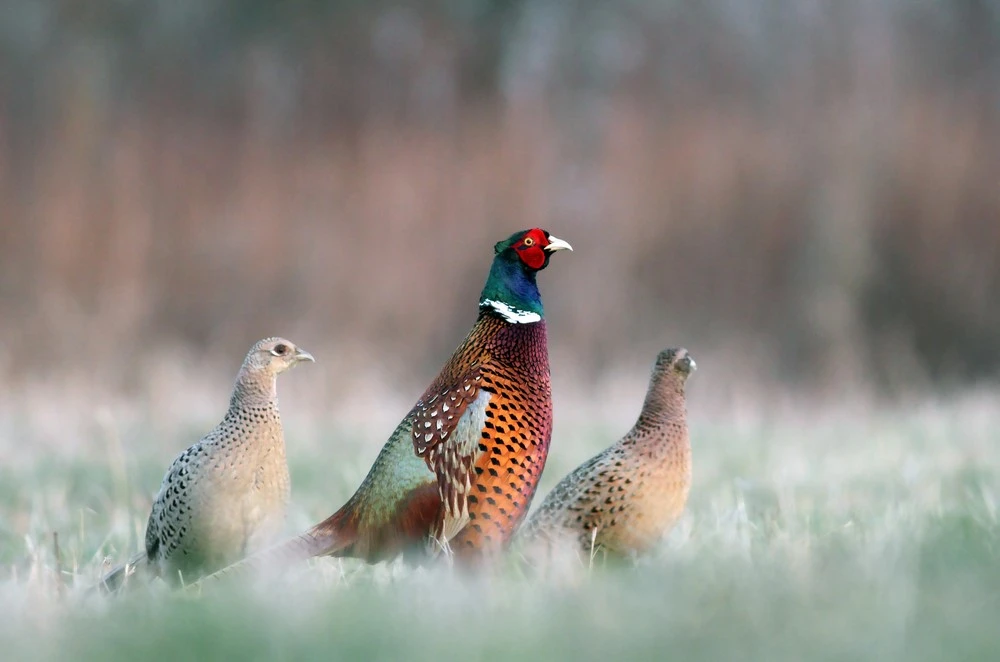Specialist shooting and gun insurance
Whenever you are on a shoot, it's worth knowing you have protection should the worst happen. With shooting insurance through Ripe, cover is available for personal accident, injury to a third party, or if you damage property while on a shoot.
Shooting insurance through Ripe specialises in all types of shooting, from rough and clay pigeon shooting through to pest control, plus specialist insurance for shotguns, air rifles and even archery.
Why choose Ripe for shooting insurance?

Public Liability cover up to £10m
Public Liability insurance gives you essential cover whilst out on shoots, in case you injure someone or damage someone's property.

Equipment cover up to £50k
With specialist shooting insurance from Ripe, we cover up to £50,000 of shooting equipment in case any of your kit gets lost, damaged or stolen.

Personal Accident cover up to £50k
Specialist shooting insurance from Ripe also offers Personal Accident cover to protect you if you're unfortunate enough to sustain a serious injury whilst out on a shoot.
What does shooting insurance cover?
Shooting insurance
- Public Liability cover – up to £10m of cover if you cause an injury to someone else or damage someone's property
- Personal accident insurance – up to £50k to provide compensation in the event of an accident whilst shooting
- Shooting equipment cover – up to £50k cover for theft and accidental damage of shooting equipment and up to £12k for a single item.
- New-for-old replacement equipment cover – if the item is less than three years old, providing it was bought new and you have proof of ownership.
- Shooting event fees if unable to attend due to sickness or injury up to £500
- Dental treatment following a shooting accident up to £500
- Worldwide cover up to a maximum of 90 days of the year
- Excess Waiver – With this option, you will not need to pay any excess charges on any equipment or dental claims
- Legal protection – Legal advice arising from gun license revocation of up to £100k to help you continue participating in the sport you love
- Bodily injury to any of your employees or members of your immediate family
- Theft from your home if there are no security devices in operation, or there is no evidence of forced or violent entry
- Theft when property is left unattended in the open
- Any wilful, malicious or unlawful act
- Any loss, theft or damage to shooting equipment which is hired, loaned or entrusted to you
For the full list of what’s covered/not, read the product information document.
Types of shooting and gun insurance
Shooting syndicate and club insurance discount
We understand shooting is a sociable sport that is about much more than just hitting the target. The great thing about shooting is the experience, heightened by the people who share the same passion as you. We recognise the close bond within syndicates and clubs, which is why we can arrange cover to help protect each member of your syndicate or club at a discounted price.
Discount:
⦁ Syndicates of up to 20 members can get a 20% discount on shooting insurance
⦁ If your syndicate have more than 20 members, simply call our friendly UK based Customer Service team and we’ll give you an exclusive quote
Shooting insurance with legal cover
As an option, through Ripe, you can also add specialist legal cover that supports up to £100k of legal fees should you need to appeal your firearms licence revoke, provided there have been no wilful criminal acts or omissions, or cover for legal representation if you are investigated for a criminal charge. For full information, read our Legal Expenses Insurance Product Information Document and Legal Expenses Insurance Booklet.
Shooting equipment and gun insurance
Many shooters mistakenly rely on their household insurance rather than specialist shooting insurance to cover their shooting equipment. Unfortunately, in most cases, household insurance won’t cover incidents outside of the home such as those at the gun club, at a shoot or in transit.
With specialist shooting insurance, you could be covered both inside and outside the home and you avoid raising your household premium if you do happen to make a claim.
-
Can I get shooting insurance cover for shooting abroad?
Worldwide cover is available as an optional extra on the policy. It will cover you abroad for up to 90 days a year and cover also includes USA and Canada.
Please note: Legal cover (If selected) is only applicable in the UK.
Can I purchase shooting insurance for my syndicate?Yes, you can purchase cover for your syndicate with £10m Public Liability cover.
How much does shooting insurance cost?The cost of shooting insurance can vary depending on a range of factors, for example the value of any shooting equipment you want to insure. The price can also vary across different insurance providers and will depend on what their insurance covers
Is it a legal requirement to have shooting insurance?While it’s not a legal requirement to have shooting insurance, most clubs and shooting grounds will require you to have proof of Public Liability insurance before you go on a shoot.
The majority of home insurance providers will also not cover your shooting equipment while you’re on a shoot, whereas your equipment would be covered if you were to add that level of cover when purchasing specialist shooting insurance.
If my firearms licence is revoked, am I covered for legal advice?Legal cover is available as an optional extra on the policy. If you have selected & purchased it, you are covered for legal advice.
Do I need a firearms licence to get shooting insurance?No, it’s perfectly legal to have shooting insurance without a firearms licence.
If you’re using a rifle or a shotgun on a shoot, it must be used in accordance with Section 11 or Section 11A of the 1968 Firearms Act.
Am I covered for theft from my car?Yes, items must be out of sight and in either a locked boot or covered luggage area. All reasonable precautions must be taken to safeguard your guns as per your firearm or shotgun certificate.
Important documents
If you already have insurance with Ripe, you’ll find your important documents for your policy in your Members area.
Refer your friends and you'll both be rewarded
If you choose to refer your friends to us, not only will we reward you with a £10 voucher of your choice but your friends will receive an exclusive discount too!
Find out moreWhy choose us?
Get the specialist cover you need, without breaking your focus.
- Award winning protection for every shot
Feel confident knowing that the insurance you're taking out is award-winning.
- We keep our customers happy
Over 320,000 happy customers already trust us for their insurance cover. Join them and enjoy the confidence it brings.
- We’re here to listen
With our quick online quote, you can tailor your insurance to suit your specific needs.
- Insurance designed to suit you
With our quick online quote, you can tailor your insurance to suit your specific needs.
Shooting insurance tips and guides

Top pheasant shooting locations
From the beach drive in Mulgrave to the renowned Castle Hill, we’ve handpicked the UK’s top pheasant shooting locations.
Find out more here
The ultimate guide to British game birds
Since we host such a vast array of game bird, it can be easy to forget which is which. To keep things simple, we’ve created this handy guide to British game birds.
Read our guide here
















 Insurance Booklet (PDF 329 KB)
Insurance Booklet (PDF 329 KB) Terms of Business
Terms of Business